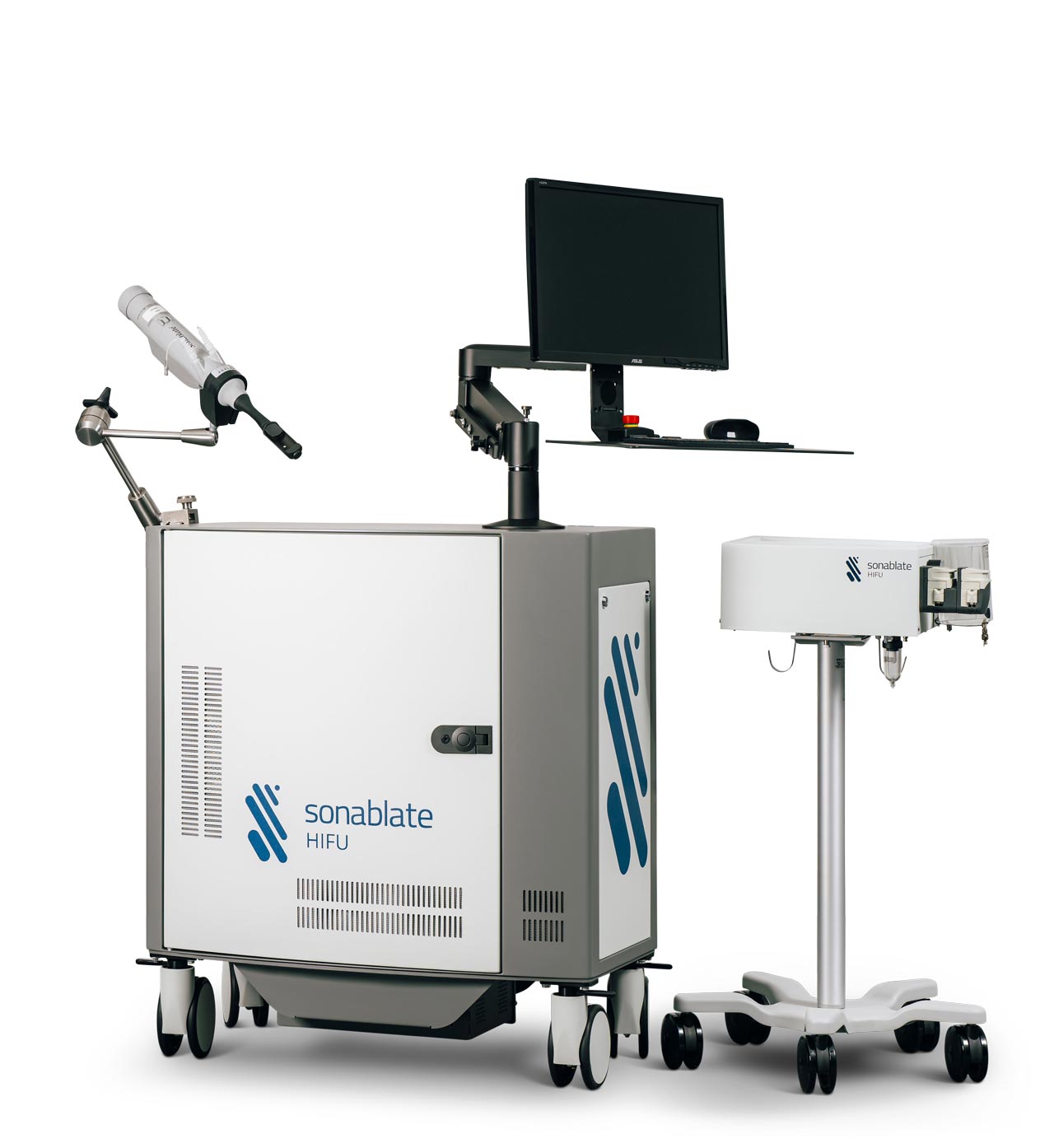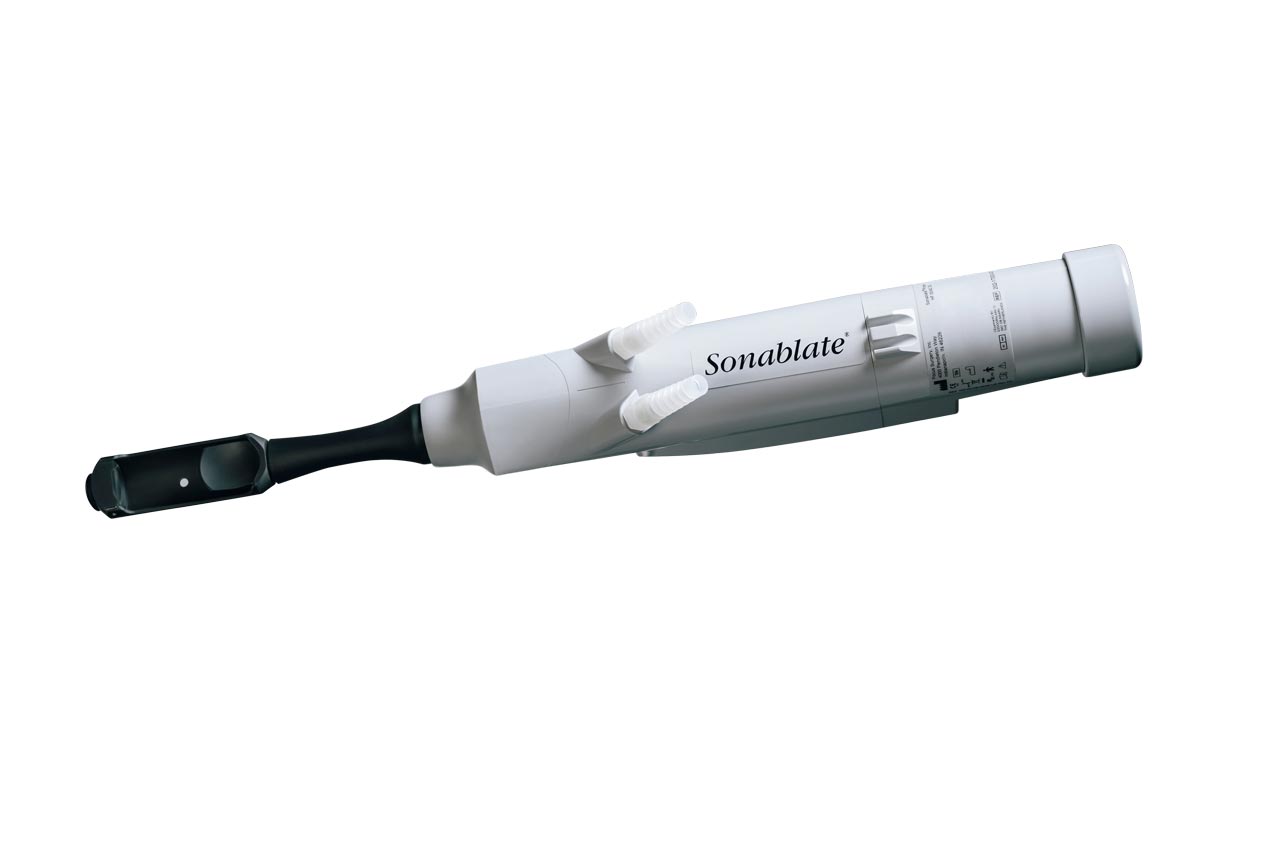

What are the indications for HIFU treatment?
- Patients with localized prostate cancer
- Depending on several factors, including how advanced the patient's cancer is, their age and general health, several treatment options are available, some of which include active surveillance or, as an extreme, invasive surgery or radiotherapy. Sonablate® HIFU is a minimally invasive, adaptable and well documented option.
What are the Sonablate® HIFU Benefits?
- It is a minimally invasive, radiation-free procedure
- It only targets damaged prostate tissue
- It presents less side effects compared to traditional surgery
- It can be carried out on an outpatient basis, during the same day
- Patients benefit from shorter recovery times — return to normal activities in just a few days
- If necessary, future treatments can be repeated (as opposed to radiotherapy or other types of treatments or surgeries)
How does Sonablate® HIFU work?
HIFU uses sound energy to generate heat that destroys targeted tissues in the body. The concept is like using the sun and a magnifying glass to burn a hole in a leaf. The focused sound waves pass safely through the prostate tissues until they reach the focal point, where they produce enough heat to destroy only those tissues.


Step 1: Plan
Based on the MRI results and your individual needs, your urologist will create a treatment plan for the tissue that needs to be destroyed.
Step 2: Removal
With extreme precision, Sonablate HIFU will only destroy damaged tissue, without affecting healthy tissue.
Step 3: Monitoring and Adjustment
Your urologist will monitor the treatment in real time, adjusting and personalizing the procedure based on your condition.
What type of anesthesia can we expect?
How long does the treatment take?
What are the possible side effects?
- Hematuria (blood in the urine)
- Urinary urgency (irritative syndrome)
- Discomfort
- Urinary infection
- Rectal lesions
What should you expect during the first week after treatment?
- Wearing a urinary catheter for 3 to 7 days
- Return to work after 3 days or depending on limitations due to wearing the urinary catheter
- Gradual return to physical and leisure activities (after 10 days)


